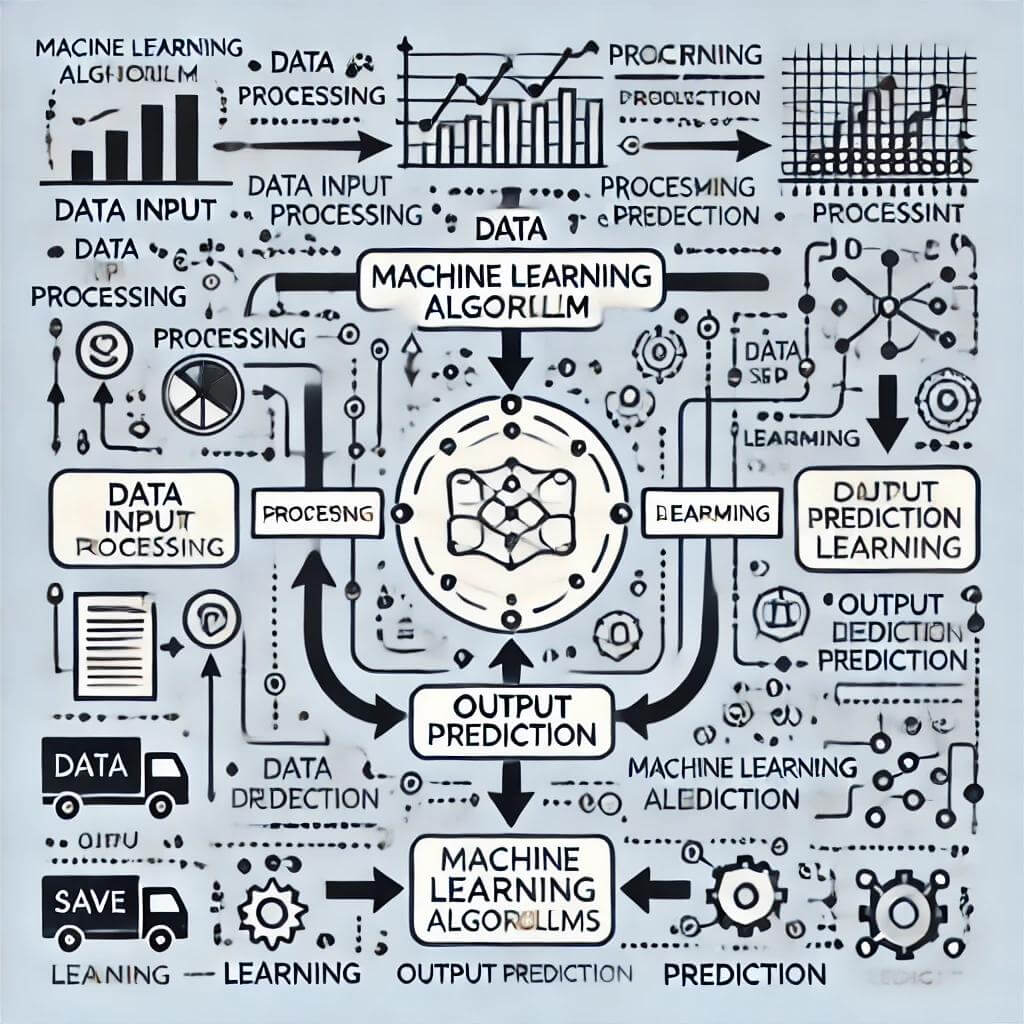Common Machine Learning Algorithms: A Beginner’s Guide
Machine learning is at the heart of many modern technologies, from recommendation systems on Netflix to voice assistants like Alexa. If you’ve ever wondered how these systems work, you’ll quickly learn that machine learning algorithms play a crucial role. In this guide, I’ll break down some of the most common algorithms in machine learning, explain how they work, and show you how they can be applied to solve real-world problems.
What is a Machine Learning Algorithm?
At its core, a machine learning algorithm is a set of instructions or rules that enable a computer to learn from data. Think of it as a recipe: the data is the ingredients, and the algorithm tells the computer how to combine those ingredients to make predictions or decisions.
The beauty of machine learning algorithms is that they improve with more data. The more they see, the better they get at making accurate predictions.
Linear Regression: Predicting Continuous Values
Linear regression is one of the simplest and most popular machine learning algorithms. It’s used to predict continuous values based on input data.
How Linear Regression Works
The idea behind linear regression is simple: if you have two variables, X and Y, you can fit a straight line that best predicts the relationship between X and Y. The equation for this line is:
Y = mX + b
Where:
- Y is the predicted value,
- m is the slope of the line (the effect of X on Y),
- b is the intercept (the value of Y when X is zero).
Example in Python
Here’s a simple Python example using linear regression to predict housing prices based on square footage:
from sklearn.linear_model import LinearRegression
import numpy as np
# Example data
square_feet = np.array([600, 800, 1000, 1200, 1500]).reshape(-1, 1)
prices = np.array([150000, 200000, 250000, 300000, 370000])
# Train linear regression model
model = LinearRegression()
model.fit(square_feet, prices)
# Make a prediction for a 1100 square foot house
predicted_price = model.predict([[1100]])
print(f"Predicted price: ${predicted_price[0]:,.2f}")
In this example, we train a linear regression model to predict house prices based on the size of the house.
Logistic Regression: Classifying Categories
Despite its name, logistic regression is used for classification, not regression. It’s ideal for binary classification tasks, like determining whether an email is spam or not.
How Logistic Regression Works
Logistic regression estimates the probability that a given input belongs to a particular category. For example, in spam detection, the algorithm calculates the probability that an email is spam. If the probability is greater than 0.5, the email is classified as spam.
The key idea is that instead of fitting a straight line, logistic regression fits an S-shaped curve known as the logistic function.
Decision Trees: Making Decisions Like a Flowchart
A decision tree is a popular algorithm that mimics human decision-making. It asks a series of questions, where each question is based on the value of a feature (like “Is the customer’s age above 30?”).
How Decision Trees Work
The tree starts with a single decision point, called a “root node.” Each time a question is asked, the tree branches out, forming more nodes and splitting the data based on the answers. The process continues until the tree reaches a “leaf node,” which contains the final prediction.
Decision Tree Example in Python
Here’s how you can implement a simple decision tree using Python:
from sklearn.tree import DecisionTreeClassifier
from sklearn.datasets import load_iris
# Load dataset
iris = load_iris()
X, y = iris.data, iris.target
# Train decision tree model
clf = DecisionTreeClassifier()
clf.fit(X, y)
# Predict the species for a new sample
prediction = clf.predict([[5.1, 3.5, 1.4, 0.2]])
print(f”Predicted species: {prediction}”)
In this example, we use a decision tree to classify different species of iris flowers based on their features.
Random Forest: A Forest of Decision Trees
While decision trees are powerful, they can sometimes overfit the data (learn too much from the training data). Random forests solve this problem by creating multiple decision trees and averaging their predictions.
How Random Forests Work
The key idea is that each tree in the forest is built from a random subset of the training data, which prevents overfitting and improves accuracy. Random forests are great for both classification and regression tasks.
K-Nearest Neighbors (KNN): Similarity-Based Classification
K-Nearest Neighbors (KNN) is a simple algorithm that classifies a new data point based on its proximity to existing points in the dataset. It’s particularly useful when the decision boundaries are non-linear.
How KNN Works
When given a new data point, KNN looks at the ‘K’ nearest points in the training set. If most of the neighbors belong to a certain class, the algorithm classifies the new point as belonging to that class.
Support Vector Machines (SVM): Drawing the Line
Support Vector Machines (SVM) are powerful algorithms for both classification and regression tasks. The key idea is to find the hyperplane that best separates data points of different classes.
How SVM Works
Imagine you’re trying to draw a line that separates red points from blue points on a graph. SVM finds the line (or plane, in higher dimensions) that maximizes the margin between the two classes. This maximized margin ensures that the algorithm makes accurate predictions on new data points.
Naive Bayes: Simple Yet Effective
The Naive Bayes algorithm is based on applying Bayes’ theorem with strong (naive) independence assumptions between the features. It’s widely used for text classification tasks like spam filtering.
How Naive Bayes Works
The algorithm calculates the probability that a given data point belongs to a particular class based on the presence or absence of certain features. Despite its simplicity, Naive Bayes is fast, scalable, and often surprisingly accurate.
Comparison Table of Common Machine Learning Algorithms
| Algorithm | Type | Best For | Example Application |
|---|---|---|---|
| Linear Regression | Regression | Predicting continuous values | House price prediction |
| Logistic Regression | Classification | Binary classification tasks | Spam detection |
| Decision Tree | Both | Simple, interpretable models | Classifying species of plants |
| Random Forest | Both | Handling large datasets and reducing overfitting | Fraud detection |
| K-Nearest Neighbors | Classification | Classifying data based on proximity | Recommending products to customers |
| Support Vector Machines | Classification | Finding decision boundaries between classes | Image recognition |
| Naive Bayes | Classification | Text classification and large datasets | Email filtering |
Conclusion
Machine learning offers an exciting and powerful set of tools for making predictions, identifying patterns, and automating decision-making. Understanding the common algorithms like linear regression, decision trees, and support vector machines is a great first step for anyone getting started in the field. Each algorithm has its own strengths and weaknesses, so choosing the right one depends on the problem you’re trying to solve.




42 comments